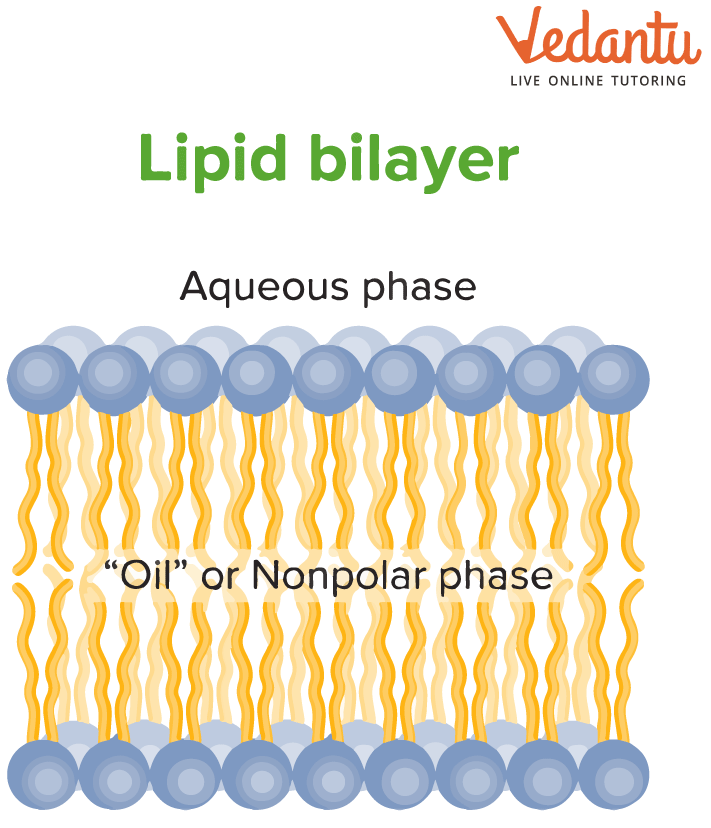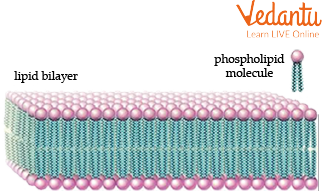




An Overview of Lipids
A chemical substance known as a lipid can be found in living things. It's waxy or oily. Lipid molecules are the building blocks of fat. Lipid comes from various sources, including algae, seeds, pork, cheese, butter, and fish. As the foundation of many cell membranes, lipid bilayers serve an essential biological purpose. Lipids can also be used as a source of backup energy.

A class of naturally occurring compounds known as lipids includes fats, waxes, sterols, glycerides, phospholipids, and fat-soluble vitamins (such as vitamins A, D, E, and K). Lipids serve various biological purposes, chief among them the storage and transmission of signals and the construction of cell membranes.
What are Lipids?
As per lipids definition biology, lipids are one of the four main types of organic molecules. The other three are proteins, nucleic acids (DNA), and carbohydrates (sugars). Carbon, hydrogen, and oxygen are the parts that make up carbs and lipids. Lipids, on the other hand, have a lot more hydrogen atoms than oxygen atoms. Fats, steroids, phospholipids, and waxes are all types of lipids. Lipids don't dissolve in water, one of their most important traits.
Types of Lipids
Many important types of lipids fall into these two main groups. These are fatty acids, triglycerides, glycerophospholipids, sphingolipids, and steroids. In a broad sense, these are divided into simple lipids and complex lipids.
Fats: Esters are made up of glycerol and fatty acids. Oils are fats that are in a liquid form.
Waxes: Esters of fatty acids with monohydric alcohols with a higher molecular weight. They have more than just alcohol and fatty acid in them.
Phospholipids are lipids with a phosphate group, fatty acids, and alcohol. They often have bases with nitrogen and other parts. For example, the alcohol in glycerophospholipids is glycerol; in sphingophospholipids, it is sphingosine.
Glycolipids (glycosphingolipids): Lipids with fatty acids, sphingosine, and carbohydrates.
Other complex lipids: Some types of lipids are sulfolipids and amino lipids. Lipoproteins could also fit into this group.
Functions of Lipids
Lipids are a part of the structure of the cell membrane. They help keep the cell membrane fluid and flexible.
It keeps the body from getting too hot or too cold and helps keep the temperature inside the body stable.
Adipose tissue is a type of tissue in the body that stores extra energy from food.
Fats are essential for storing energy, keeping the body's temperature steady, protecting vital organs, regulating hormones, sending nerve impulses, and moving fat-soluble nutrients around the body.
Fats in food give you a concentrated source of energy, make food taste and feel better, and help you feel full.
Characteristics of Lipids
In this portion of the article, we will look at various examples and characteristics of lipids.
There are four main categories of organic compounds: lipids, proteins, nucleic acids (comprise the genetic material), and carbohydrates (sugars). Carbon, hydrogen, and oxygen are the main constituents that make up a lipid compound. This means lipids are composed of the same basic components as any carbohydrate. But lipid elements often have a lot more hydrogen atoms than oxygen atoms.
Wax, phospholipids, steroids, and fats are major examples of lipids. Lipids don't dissipate in water, which is one of their primary characteristics.
In living things, lipids play many crucial roles from energy storage and hormone production to being the major component of cell membranes.
Lipid Examples in Biology
Various types of fats are found in living organisms. Therefore in this part of the article, we will look at those types and lipid examples from Biology. Types of lipids are as follows:
1. Fats
A fat unit is made up of three fatty acid molecules and one glycerol molecule. Fat particles, like other lipids, are composed of hydrocarbons. In our bodies, fat serves as a form of stored energy. There are two major divisions of fats, namely- saturated and unsaturated fats.
Saturated Fats
They are found as a solid at normal room temperature and pressure.
They are also called bad fats.
If consumed can cause various health hazards like blockage of arteries, cancer, etc.
Unsaturated Fats
They are Found in a liquid state at room temperature and pressure.
These are extracted from natural and healthy sources like nuts.
They are termed good fats.
2. Wax
They are similar in composition to fats, however are only composed of only one long fatty acid chain. These are usually produced as a source of protection by animals and plants. Wax is also produced by humans from the ear as a source of protection against dust and germs.
3. Steroids
Another important category of lipids is steroids. Cholesterol in the human body, plant pigment chlorophyll, and various hormones are examples of steroids. Hormones like testosterone, the male hormones, and estrogen, the female hormone, are produced by our bodies using cholesterol. Moreover, Plants need chlorophyll to capture light for the process of photosynthesis.
4. Phospholipids
The fourth main category of lipids is phospholipids. In terms of chemical composition, they resemble fats a lot. One of the primary structural elements of cell membranes in various organisms is phospholipids.

Phospholipid Layer in Cell Membranes
Fun Facts About Lipids
Honeybees use wax to create their honeycombs, shielding them from rain.
For absorption and to stay in our bodies, several vitamins require lipids. A, D, E, and K are a few of these vitamins.
If we mix fats and water, they float in the water rather than dissolve in it.
The fats can be dissolved in water if added alkali, such as dish soap.
All commonplace products, such as chewing gum, polishes, and candles, use wax.
Lipids are "hydrophobic" because they do not dissolve in water.
Without lipids, digestion and absorption of food would not be possible.
Conclusion
Lipids are crucial in our lives, and we cannot live without lipids. Some are core components of cell membranes, which enclose cells. The body requires fats to cushion its organs, store energy, and regulate body temperature. Fats also aid in the absorption of vitamins.
FAQs on Fun Facts About Lipids
1. Are all fats unhealthy or good?
No, our bodies require fats to be healthy. Without some fats in our diet, we couldn't survive. Most people need 20% to 30% of their calories from fat. However, it might be harmful to consume too much fat. We might gain weight from it, and it might block our arteries.
2. Why are lipids essential for kids?
Growth and development need to get enough healthy fats. For healthy brain growth, young children need to eat enough of them. In addition to giving the body energy, fats help the body absorb vitamins that can only be absorbed if there is fat in the diet. These vitamins are A, D, E, and K.
3. Why is trans fat unhealthy for our bodies?
The worst fats are trans fats. The processing of food creates them. Trans fats are widely used in producing packaged goods because they prolong their shelf life. Candy, pizza, doughnuts, potato chips, and packaged snacks include trans fats. Trans fat consumption has been linked to diabetes, heart disease, and other health issues.









